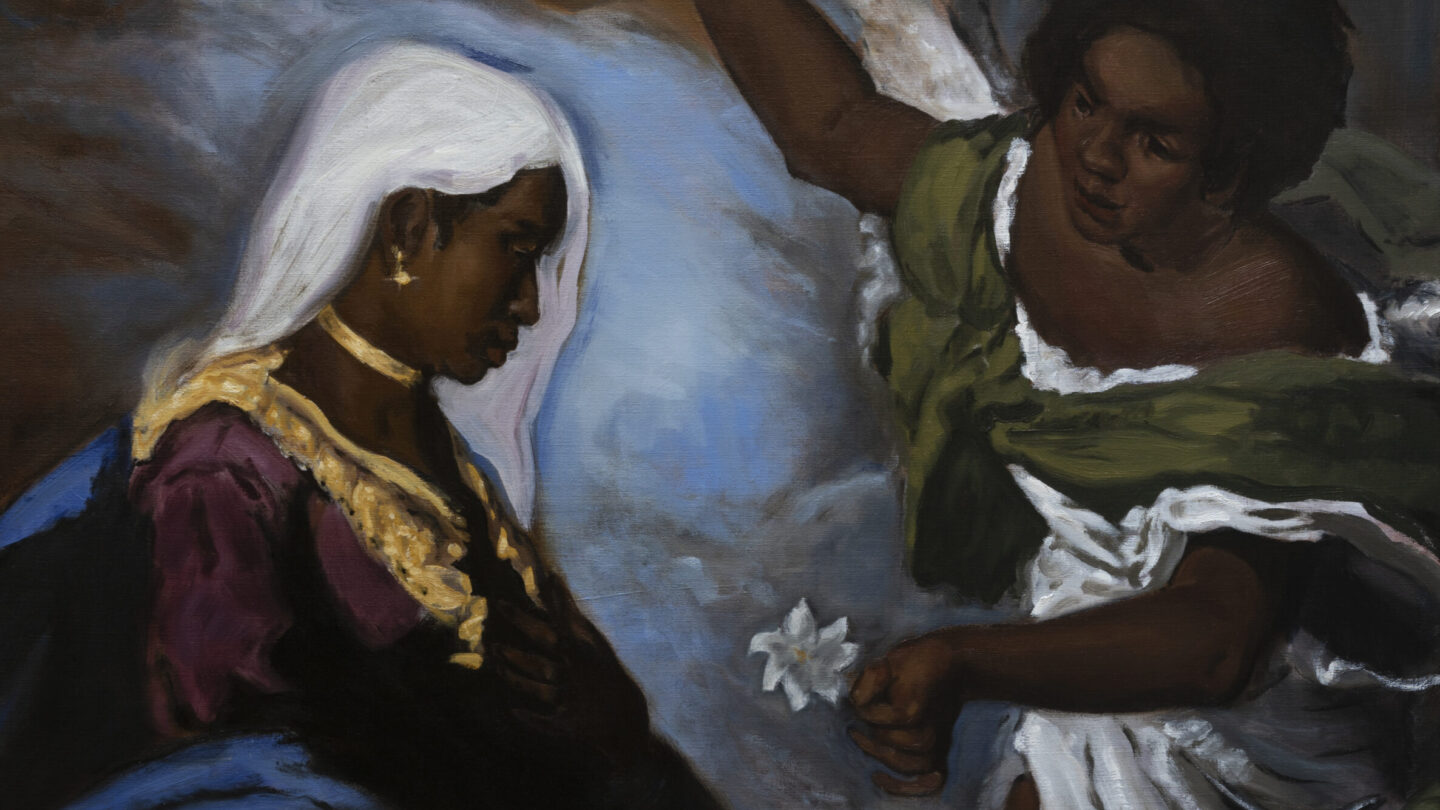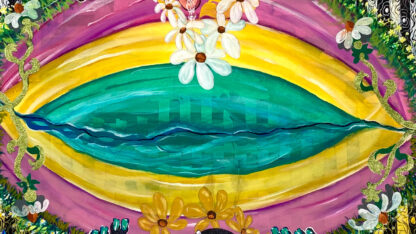Michelangelo, Da Vinci and Raphael are the artists whose works form the basis of 15th century Florentine art. Chicago-born artist Thelonious Stokes was inspired by these brilliant painters and other old masters, while studying at the prestigious Florence Academy of Art in Italy. Stokes reconceptualizes Judeo-Christian themes in the style of European Renaissance art with Black figures as subjects in his show “To the Last Page,” presented by United Talent Agency here in Atlanta at Pullman Yards. The artist joined “City Lights” host Lois Reitzes via Zoom, all the way from Florence, to share about his work in the exhibit.
Interview highlights:
Paintings touched by an artist’s immersion in two richly distinct cultures:
“Living in Florence for, what, five years now, and it being a Roman Catholic, an Orthodox Christian community… [I’ve been] reflecting on my childhood growing up in the Church, and just seeing this interesting parallel from rich Renaissance and Baroque, even 19th century European artwork, in relation to Christianity and kind of seeing myself or wanting to see myself, per se, in these paintings,” said Stokes. “So [I’m] just sponging as much information, technically, on an abstract basis, just how I move, how I walk, things I eat; but how these are fused with my early childhood in Chicago, right? This Baptist, South Side, very Black upbringing. And then you just drop me in Italy, put a paintbrush in my hand. That’s basically what you see on those walls.”
On the radical reclamation implied by placing Black subjects in Judeo-Christian imagery:
“I’ve used the term ‘Blackwashing’ in my work. I don’t necessarily like the concept of fighting fire with fire, but I was just in Ghana and I was seeing images of Jesus Christ that were Germanic in nature, European in his appearance. And it did something to me,” Stokes said. “So I was like, ‘Okay, cool. I think I’m making the work that must be created,’ be it for the South Side of Chicago or the continent of Africa as a whole. I ultimately want to redistribute these images globally… I feel a duty, a responsibility to produce these images.”
“There are multiple depictions of Black Christ throughout Italy; you see it popping up here and there all the time. And it’s very striking when you see this,” Stokes explained. “It has a sense of, ‘I haven’t been shown this. I haven’t been told about this. Is this a secret? Am I supposed to be seeing this?’ And seeing some of these Black Christs and Black Madonnas throughout Europe, it almost for me was a reaffirmation… a sign activating the ultimate direction of my work. It told me, ‘Yes, these images need to be produced.’ I even intend on producing large billboards throughout Accra — that’s kind of a newer social performance that I want to do — and just slap dab in the middle of Africa, place these images around there so people can see them.”
Why gems, jewels and gold adorn many of Stokes’ figures:
“The reason behind the gold is to enhance the level of glory that sits on the Black body,” said Stokes. “Gold on the surface of just Black skin, it’s an ancient conversation. It’s not a new conversation in any way, and it still happens today. I wear jewelry myself. There were kings that wore jewelry. There were chiefs that wore jewelry. And I’ve noticed, specifically within the European aspect of Christianity, the virgin is usually depicted in a more humble way, with very, to an extent, plain clothing. And that wasn’t really natural for me. I felt like I had to naturally place this queen of the savior, this mother of the land, in the most decadent possible attire because I feel like she owns it.”
“I’m really just starting to apply this precious soft metal and jewel within some of the works, particularly on depictions of the Virgin Mary, things of that nature. It is something you’ll for sure see come out of me a lot more in the future, is this level of decadence that I want to associate with Blackness.”
The exhibition of art by Thelonious Stokes, “To the Last Page,” will be on view at Pullman Yards Jan. 27 – Feb. 25. More information is available at utaartistspace.com/exhibitions/to-the-last-page.










